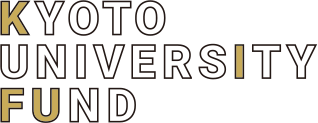Vol.8 Interview
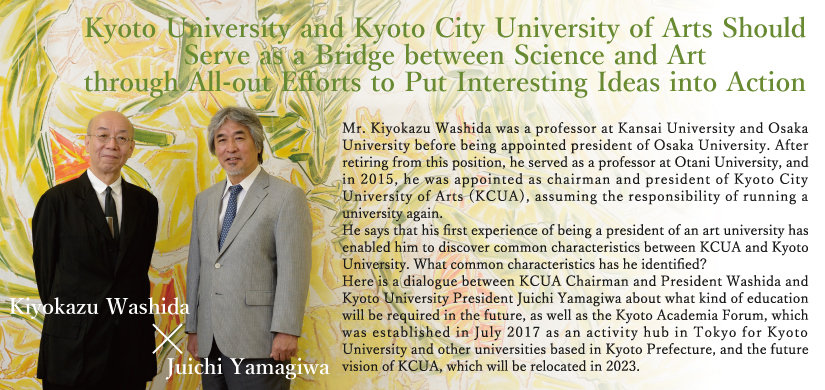
Kiyokazu Washida
Chairman and President of Kyoto City University of Arts
Born in Kyoto City in 1949, Kiyokazu Washida graduated from the Department of Philosophy, Faculty of Letters, Kyoto University in 1972 and left the Doctoral Program of the Department of Philosophy, Graduate School of Letters, Kyoto University after fulfilling all program requirements but the dissertation in 1977.
He served as a professor at Kansai University and Osaka University before being appointed as the 16th president of Osaka University in 2007. Retiring from office and becoming professor emeritus of Osaka University in 2011, he assumed the position of professor at Otani University in the same year (and currently serves as a visiting professor at the same university). He took the position of director of Sendai Mediatheque in 2013 and was appointed as chairman and president of Kyoto City University of Arts (KCUA) in 2015.
He has produced a large number of critical and other works in a wide variety of fields, including art, fashion, education, labor and nursing care, from the perspectives of clinical philosophy and ethics, in which he specializes.
He received the 10th Suntory Prize for Social Sciences and Humanities for his Bunsan-suru risei (lit. "Dispersed Reason") and Modo no meikyu (lit. "Labyrinth of Mode") in 1989, the 3rd Kuwabara Takeo Academic Prize for his 'Kiku' koto no chikara (lit. "Power of 'Listening'") in 2000, the Shiju Hosho (Medal of Honor with Purple Ribbon) in 2004, and the 63rd Yomiuri Prize for Literature for his 'Guzuguzu' no riyu (lit. "Reasoning Japanese Onomatopoeia") in 2012.
Art education helps enhance the ability to offer alternatives
Yamagiwa After working at three universities--Kansai University, Osaka University, and Otani University, you assumed the position of president of an art university for the first time. Kyoto City University of Arts (KCUA) is Japan's oldest art university, isn't it?
Washida Yes, it is. Its predecessor was the Kyoto Prefectural School of Painting, which was founded in 1880 as Japan's first public painting specialist school. For 137 years since its founding, KCUA has served as a supporting pillar for modern and contemporary Japanese art and produced many internationally renowned artists.
Indeed, Kyoto was the first city in Japan to have elementary schools based on a school district system. In the early Meiji Era, local people established 64 elementary schools at their own expense in just half a year. This fact highlights the energy and foresight of the citizens of Kyoto. They tried to overcome the crisis of the outflow of human resources to Tokyo in the wake of the Meiji Restoration by nurturing talent and promoting art and literature.
Yamagiwa This means that Kyoto is home to many artistic and cultural works and activities not only thanks to its long history but also because of the citizens' strong determination. Amid current national efforts to promote cultural programs for the Tokyo 2020 Olympic and Paralympic Games, Kyoto is highly expected to play a role in demonstrating the integrated power of culture and art.
This year (2017), Kyoto University was named as a Designated National University and assigned to perform a special mission as a leader in the humanities and social sciences by the Ministry of Education, Culture, Sports, Science and Technology (MEXT). I personally interpret MEXT's assignment of this mission as coming from the same such expectations for Kyoto University. What mission do you believe KCUA will have from now on as a pioneer university in the art of Kyoto?
Washida We will just continue executing our mission to nurture future talent in the field of art. From a broader perspective, I believe that art education should not only serve as a supporting pillar for art and culture but also become the core of higher education.
Yamagiwa You mean that art leads directly to the liberal arts. Why do you believe that?
Washida Japanese society has been shrinking over time. We can no longer see rapid economic growth. Turning our eyes to the world, there is a huge pile of unsolved problems, such as global environmental deterioration and increasing ethnic or religious conflict. The heavy debts of the current generation have been left unpaid, imposing the tough challenge of how to survive onto future generations. Moreover, the current multicultural society has made it difficult for citizens to share common values or goals.
I believe that such an era truly requires knowledge that enables us humans to offer alternative solutions to various problems and to finally reach perfect solutions.
Yamagiwa I see. That requires the ability to judge the precise nature of our society, question society, and develop original ideas from a standpoint that is somewhat at a distance from society. You mean that art education can help increase this ability, right?
Washida Sure. Artistic creation generally originates from a kind of "tantrum," a primitive feeing of disapproval for or rejection of what the world currently is, or discomfort with fitting in smoothly with the world.
I believe that creative activities involve cherishing such a feeling of discomfort and, rather than retaining the feeling as it is, raising it to be an alternative vision of an ideal world based on unconventional, original ideas, and further, turning it into artistic expressions.
Kyoto University and KCUA share the mental attitude
of making all-out efforts to put into action interesting ideas
Washida I have actually found two similarities between art education and the education provided at Kyoto University.
Yamagiwa What are they?
Washida The first is the high value placed on how interesting ideas are and on processes.
Yamagiwa Kyoto University places high importance on interestingness. It implements many events and initiatives with the term "omoroi" (meaning "interesting" in the Kansai dialect) in their names, with the aim of fostering the attitude of readily enjoying interesting things.
Washida When I studied at Kyoto University, the words of former French literature professor Takeo Kuwabara--"I'm not interested in smart guys. What is important is whether they are interesting or not"--was passed on like a legend.
It is in entrance exams that I have found the similarity in valuing processes. Although I have no ideas what happens in the current entrance exams, the math exam I took as a candidate for Kyoto University was very difficult, so I didn't expect to pass the exam. However, I later proved to have achieved quite a good score. The math professor Tsuyoshi Mori said, "I evaluate examinees' processes of thought, rather than their answers." Professors used to collect even drafts, check even traces of erased writings, and add extra points to examinees' scores if their processes of thought were satisfactorily logical or if they solved questions based on unique ideas.
Yamagiwa That's still the case now. That's why it takes so much time to grade math exams.
Washida KCUA's entrance exam also evaluates the examinees' overall process of creating a solid work from developing questions to interpreting the work. While evaluating those works, professors sometimes seem surprised and happy at the examinees' extremely unique solutions.
Yamagiwa What is the other similarity?
Washida It's the high value attached to making an all-out effort to reach bedrock. You yourself make all-out efforts to reach bedrock in your specialized field, watching over a gorilla for a number of days and examining even its excrement, though there is currently the trend of writing a paper immediately after obtaining a certain amount of data.
Yamagiwa I stay by the animal even without collecting data, just continuously watch it. I accept all incoming information, keeping myself free from any prejudices or hypotheses. This process is necessary for me to develop my thoughts.
Washida It doesn't seem efficient but is a process of reaching bedrock without neglecting any subtle details.
In creating their works, KCUA students also make all-out efforts to enhance their skills and develop their ideas thoroughly. They spend many hours or days deepening their ideas before beginning to create a work. They work on their works, stop doing so to think, and start working again. They repeat that process.
Yamagiwa It's not enough that they come up with ideas; they should also make an all-out effort to reach bedrock with the support of their skills.
Washida Despite the boundary between the two fields, I believe that science and art resonate with each other in some aspects and share similar mental attitudes.
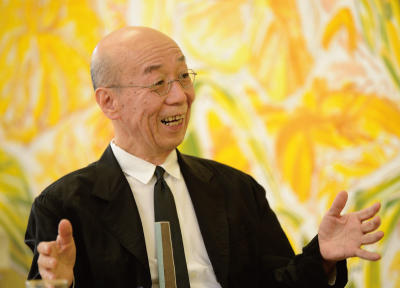
A high value placed on the wild and the noble
is also common to the two universities
Washida As represented by your studies of gorillas, which we just mentioned, Kyoto University has a long-established tradition of fieldwork. I recognize that the term "wild" in the University's WINDOW Concept delivers the message that any pursuit for true knowledge must be based on fieldwork, whereby you are immersed in the field, observe realities with your own eyes, and keep your senses open to everything.
Another term that has caught my eye in the WINDOW Concept is "noble." I understand that the term represents a sense of tolerance toward, modesty about, and respect for all elements of different natures from yours or elements beyond you, whether they be people, nature, or animals.
Yamagiwa I was inspired to include these two terms in the Concept by my memories of what I had learned from Dr. Kinji Imanishi, a pioneering Japanese primatologist, and Dr. Junichiro Itani, my respected professor. Both natural scientists taught me that the pursuit of truth behind research subjects would require fitting in well with the world of the subjects, preserve logic, and readily get along and wait, instead of trying to cut your way into their world and conquer it by force. I believe that what is important in both science and art is how you deal with your subjects.
Washida Both the wide and the noble, especially the latter, are essential for art learners. Here I have also found a similarity between the two universities.
What kind of knowledge is truly necessary
in an unpredictable world
Washida We are now at a turning point in the times, facing many challenges and experiencing difficulty in predicting what lies ahead of us. We have so far felt comfortable with a society that moves as predicted. Therefore, the government and companies have formulated five-year plans or medium-term plans that include goals set within the scope of their current imagination, and they have evaluated the levels for the achievement of those goals.
From now on, however, we will encounter various things beyond our expectation or understanding and face difficulties addressing them within conventional frameworks. I believe that such a situation will require us to have the ability to "get along," as you said just now. Science and art will help significantly there, because unexpectedness is inherent in both of them. Artworks that are completed as planned are not interesting, and art is per se about trial and error without a clear vision of destinations. Science also owes much to profound discoveries derived from failed experiments. Both new scientific discoveries and artistic expression rely on sustained efforts that would not be recognized at all according to the criterion of usefulness, as well as attempts to "get along" with various factors.
Yamagiwa Dr. Imanishi and Dr. Itani taught me to use intuition in order to decide how to address unexpected things.
In his original theory on the law of scales, Dr. Imanishi emphasized the importance of viewing phenomena through a dialogue with nature and from the perspectives of and ideas inspired by species other than humans, such as plants and insects. In the end, no one might be able to survive in the future without original ideas and intuitions supported by fieldwork and a noble sense.
Washida Universities are per se abundant in perspectives, with a wide range of scales from maximum to minimum ones. Some professors and students conduct research on space, and some others study a philosophy dating back three millennia. I believe that diversity in the scales of studies by academics enables universities to offer logically possible alternatives based on past cases.
The Kyoto Academia Forum
is a window to the energy of Kyoto
Yamagiwa In July 2017, the Kyoto Academia Forum opened in a space next to the Kyoto University Tokyo Office, to provide information about culture, art, and science in Kyoto in collaboration with partner universities in Kyoto Prefecture.
Washida One of its important features is the participation of a number of art universities, including KCUA.
Yamagiwa Through the Forum, I hope to pose the question of what it is to be "omoroi" (meaning "interesting" in the Kansai dialect), regardless of whether it's in art or science.
Washida You will ask what is "omoroi" in Tokyo, right?
Yamagiwa I would like to hold events like the Kyoto U Omoro Talks: Toward an Artistic Kyoto U and the Kyoto U Henjin Koza ("Eccentrics' Seminars"), both of which have been held at Kyoto University. The former, which ended in March 2017, originated from the concept of transforming the University by applying artistic ideas, and comprised talk sessions involving artists invited as guest speakers and faculty members. The latter, which was launched in April 2017, is a series of talk shows featuring "eccentric" faculty members and a comedian as the straight man.
Washida You mean these events show examples of what it is to be "omoroi."
Yamagiwa Organizing the Eccentrics' Seminars, I understand that the public expects that eccentrics will not lack common sense. Those we recognize as "eccentric" are people who make all-out efforts to reach bedrock based on single-minded determination, so that they gradually diverge from common sense and look interesting and eccentric from the perspective of common sense although they don't see themselves as eccentric. The eccentric and the interesting are almost the same.
In areas where corporate-centered urban logic dominates, including Tokyo, people hesitate to do anything radical or eccentric, resulting in a feeling of being trapped.
Washida By contrast, Kyoto is blessed with tolerance toward the eccentrics living there.
Yamagiwa I hope to bring the energy of Kyoto as such to Tokyo and make it a favorable place to enjoy discussions while freely stretching the imagination.
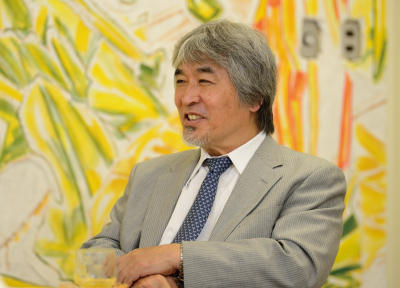
Art is an integral part of our everyday lives,
instead of an enshrined object of worship
Yamagiwa KCUA will be entirely relocated to the Sujin area to the east of JR Kyoto Station in 2023.
Washida The current KCUA campus is a very comfortable place for artistic creation. It's compact and not neatly divided into specific areas, so students in ceramic art and sculpture work side by side, inspiring each other.
Meanwhile, I also suppose that it might be better for students who aim to become artists to be buffeted about in the real world. The Sujin area, located near Kyoto Station, is a mix of diverse people, including tourists.
Yamagiwa Yes, it's an ideal place for encounters with diverse cultures.
Washida At the same time, the area is a typical depopulated urban area with an aging population. The local elementary school had only two new students in a recent year, and there are many vacant houses around the area. First-hand experience with such realities of contemporary society will be meaningful for KCUA students because art is not an enshrined object of worship but an integral part of our everyday lives.
The process of designing the campus will begin soon, and we hope to make it a place where not only students but also neighbors and tourists can feel free to drop in and to help vitalize the neighborhood by using nearby vacant houses effectively.
Yamagiwa What will you do with vacant houses? Give me some examples.
Washida We are planning to use vacant houses as places for students to live together or for alumni who need some time before standing on their own feet to create and restore works. I hope to encourage students to go out into the neighborhood, build relationships with the locals, and stir up the neighborhood. We aim to make the area a place where students and the neighborhood can achieve self-development together, rather than a high-society art town.
Yamagiwa Soon after being appointed as Kyoto University president, I launched the University Campus Kyoto initiative, which aims to turn the entire city of Kyoto into a "campus." Since many of the Kyoto University students are from outside Kyoto Prefecture, they can know more about Kyoto and encounter "omoroi" ideas unique to Kyoto by interacting with people with the artistic spirit that supports the great depth of Kyoto. I hope that KCUA's relocation will enable Kyoto University students to have closer communication with such people.
Washida If science and art students who have studied separately from their respective perspectives can write papers or create works together by sharing the same processes, rather than just aiming for concrete results, they will help improve each other's method and broaden each other's imagination. I want to devise a program for creating a place for students to do such things on a daily basis.
Yamagiwa Students are the leading players, so let's deepen the relationship between the two universities while "egging them on." Thank you for joining us today.
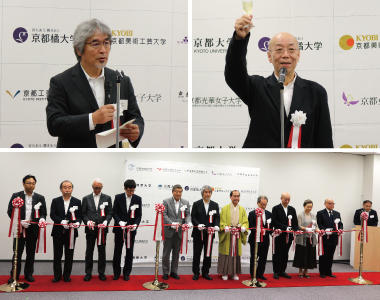
On July 3, 2017, the Kyoto Academia Forum opened in a space next to the Kyoto University Tokyo Office on the 10th floor of the Shin-Marunouchi Building, and the opening ceremony was held on July 12. This Forum aims to provide academic information about culture, art, and science in Kyoto and increase the appeal and value of Kyoto in collaboration with partner universities in Kyoto Prefecture while taking advantage of their respective strengths.
The opening ceremony began with opening remarks by Kyoto University President Yamagiwa, followed by a social gathering, which was started with a toast by KCUA President Washida. Over 100 attendees, including Diet members and people from the industrial world, expressed their high expectations for the Forum.
As of July 12, 2017, the partner universities are as follows:
Kyoto University of Foreign Studies; Kyoto Koka Women's University; Kyoto Institute of Technology; Kyoto Women's University; Kyoto City University of Arts; Kyoto Seika University; Kyoto Tachibana University; Kyoto Arts and Crafts University; Doshisha Women's College of Liberal Arts; Kyoto University

